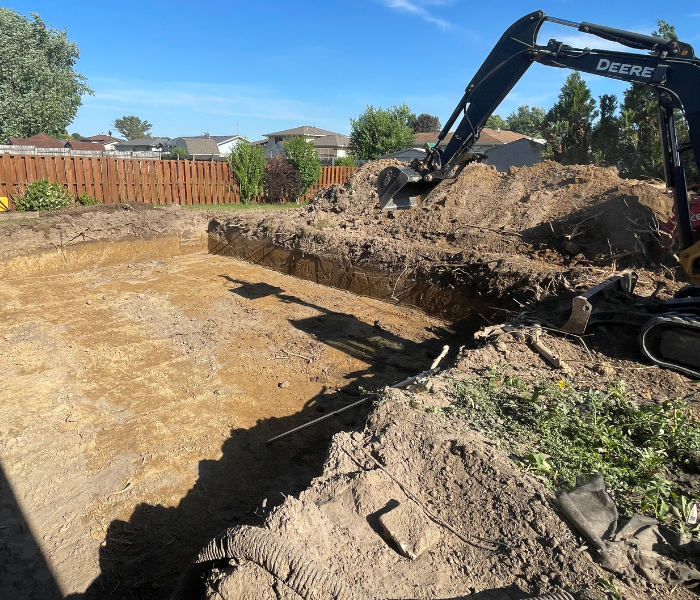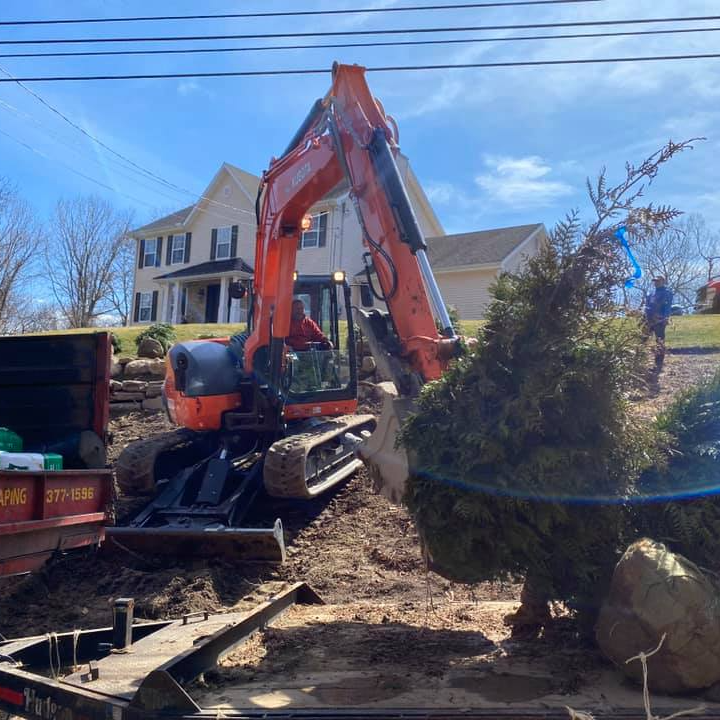Business Lancaster Trenching - Trenching Services for Services in Lancaster
Business Lancaster Trenching - Trenching Services for Services in Lancaster
Blog Article
Comprehensive Exploration: The Science Behind Superior Excavation Practices
The world of excavation practices is a domain where science links with workmanship to uncover the mysteries hidden below the planet's surface area. From old hand devices to modern hydraulic excavators, the development of excavation methods has actually been a testimony to human ingenuity and technological improvements. What genuinely establishes premium excavation practices apart is a deep understanding of geological principles, coupled with the utilization of cutting-edge tools and methodologies. By exploring the scientific research behind these methods, we can discover the keys that exist underneath our feet and appreciate the precision and experience that enter into every dig.
Advancement of Excavation Methods
Throughout history, the advancement of excavation methods has played a crucial function beforehand building practices and historical discoveries. From the rudimentary devices utilized by our ancestors to the advanced machinery used in contemporary times, the development of excavation approaches has significantly changed how we come close to different tasks.
In ancient times, hand-operated labor with fundamental tools such as shovels, pickaxes, and wheelbarrows was the key approach of excavation. This labor-intensive process limited the depth and range of excavations, frequently causing sluggish development and limited access to certain sites. Nonetheless, as people advanced, so did the devices and strategies utilized for excavation.
The Industrial Change marked a transforming factor in excavation techniques with the intro of steam-powered machinery. In modern times, technology plays a pivotal function in excavation, with innovations like General practitioner systems, drones, and 3D scanning boosting precision and performance in the field.
Function of Modern Technology in Excavation

The integration of cutting-edge technology has essentially reinvented the area of excavation, improving precision and effectiveness to unprecedented levels. One of the essential technological advancements that has dramatically impacted excavation practices is the usage of general practitioner systems. These systems enable precise mapping of excavation websites, allowing operators to properly situate underground energies and structures. Additionally, using telematics in excavation devices has enabled real-time surveillance of equipment performance, bring about aggressive upkeep and raised functional productivity.
Furthermore, the development of 3D modeling and simulation software program has streamlined the preparation process for excavation projects. Operators and engineers can now picture the entire excavation process before beginning, recognizing possible obstacles and optimizing operations. Together with this, the execution of drones in excavation tasks has helped with aerial surveys, volumetric measurements, and website inspections with unequaled speed and accuracy.
Geological Principles in Excavation
An understanding of geological concepts is necessary for making certain the structural stability and stability of excavation websites. Geological factors original site play an important function in establishing the expediency and safety of excavation tasks (excavating ohio). One essential geological concept to think about is the kind of soil or rock existing at the site. Various dirt kinds, such as clay, sand, or gravel, have differing degrees of stability and call for different excavation techniques. Natural soils like clay may need added assistance to prevent collapses, while sandy soils might be vulnerable to erosion throughout excavation.
By carrying out comprehensive geological studies and evaluation, excavators and engineers can develop methods to reduce risks and make certain the successful conclusion of excavation projects. Eventually, incorporating geological concepts into excavation methods is crucial for accomplishing safe, reliable, and sustainable results.

Newest Tools for Excavation
In the realm of excavation techniques, contemporary advancements in tools have reinvented the effectiveness and precision of excavation processes. These drones can offer in-depth you could try here airborne studies of excavation websites, supplying real-time information on topography and prospective threats.
An additional cutting-edge tool obtaining appeal is the application of 3D printing technology for developing custom excavation tools. This permits the manufacturing of specialized devices that are tailored to the particular demands of a job, enhancing effectiveness and reducing downtime.
Furthermore, advancements in products science have actually led to the development of stronger and a lot more sturdy excavation tools. lancaster trenching. Tungsten carbide-tipped excavator accessories, for instance, deal exceptional performance in challenging ground problems, boosting efficiency on-site
Science's Effect on Excavation Practices

Moreover, improvements in materials science have actually led to the creation of more powerful, extra long lasting excavation devices and tools. The use of composite products in miners and shovels has actually improved their performance and long life, eventually enhancing efficiency on excavation websites. Additionally, clinical study on soil technicians and geotechnical design has supplied valuable insights into dirt behavior, allowing excavation professionals to make educated decisions pertaining to excavation methods and dirt stabilization methods. On the whole, scientific research remains to drive development and enhancement in excavation techniques, making excavation jobs a lot more effective, economical, and lasting.

Final Thought
Finally, the evolution of excavation methods has been significantly influenced by developments in technology and a deeper understanding of geological concepts. The current devices and tools utilized in excavation have improved performance and accuracy in the field. The application of clinical knowledge has actually significantly enhanced excavation techniques, bring about a lot more sustainable and reliable methods for excavating various kinds of products.
In the world of excavation practices, modern technologies in devices have actually revolutionized the performance and accuracy of excavation procedures. By leveraging scientific principles, the excavation industry has been able to significantly More hints boost efficiency, precision, and safety in excavation processes. GPR enables excavation teams to non-invasively check and map subsurface frameworks, energies, and possible threats, enabling them to prepare excavation projects with better accuracy and decreased threat of accidents.
Additionally, scientific study on soil auto mechanics and geotechnical design has actually supplied important insights right into soil actions, permitting excavation professionals to make informed choices pertaining to excavation approaches and soil stabilization strategies. In general, scientific research continues to drive innovation and enhancement in excavation techniques, making excavation projects a lot more effective, cost-efficient, and lasting.
Report this page